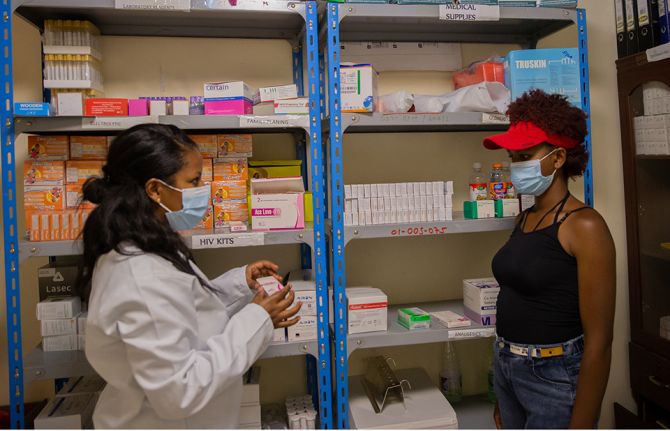

Feature Story
Ending AIDS is everyone’s business
10 September 2019
10 September 2019 10 September 2019By Gunilla Carlsson, UNAIDS Executive Director, a.i. and Nancy Wildfeir-Field, President of GBCHealth
Over the past three decades, AIDS has united the international community in a way that no other health crisis has. The disease galvanized grass-roots groups to fight for the human rights of some of the world’s most vulnerable people. AIDS has generated new levels of solidarity between the North and the South. And it has inspired medical innovation.
Now the world has reached a crossroads. The number of people becoming infected with HIV and dying is decreasing, but not fast enough. Despite tremendous unmet needs, the resources needed to bolster progress declined by US$ 1 billion in 2018. There are more people living with HIV today than ever before, around 38 million women, men and children, making AIDS one of the biggest health and development threats of our time.
Responding to HIV matters to business. Unlike most other health crises, HIV largely affects people in the prime of their life. This is not only a high cost to society, but also a barrier to economic growth. Nine out of 10 people living with HIV are adults in their most productive years. In the most affected countries, HIV takes a direct toll on markets, investments, services and education.
Without proper care and support, people living with HIV may be unable to work, may need extended periods of time off work and often incur significant out-of-pocket health-care costs. AIDS-related deaths result in a tragic loss of human life, which impacts on the livelihoods of families and reduces the productivity of businesses. The epidemic slows economic growth and threatens the futures of workers and employers.
However, when companies working in countries severely affected by HIV take an active and visible role in the AIDS response, they note improvements in productivity, morale and staff retention. Being part of an effective multisectoral AIDS response generates goodwill and demonstrates a company’s values and commitment to corporate citizenship and the well-being of its employees, customers and communities. Forward-thinking businesses are needed to help develop holistic solutions and help manage risks, including by addressing HIV as a health and well-being issue in the workplace. Evidence suggests that for many businesses, investments in programmes that prevent HIV infection and provide treatment for employees living with HIV are profitable.
The Sustainable Development Goals (SDGs) provide an important shared framework through which companies can work together with suppliers, customers, communities and other stakeholders to end AIDS as a public health threat by 2030. To achieve that goal, action is required across a number of interlinked challenges spanning access to health (SDG 3), gender equality (SDG 5), ending discrimination (SDG 10), good governance (SDG 16) and partnership (SDG 17), with human rights a cross-cutting theme.
Business cannot succeed unless societies are healthy. Successful private sector leaders recognize that the well-being and security of the communities they serve are essential to their shared futures. Equally, we cannot end AIDS without the active participation of the private sector. Business innovations in products and services, relationships with employees, consumers and policymakers, core capabilities in logistics, data analytics and marketing and financial and human resources can all help to fill gaps in publicly funded HIV testing, prevention and treatment programmes.
Governments, intergovernmental organizations, civil society and businesses each possess important, unique and complementary resources and capabilities to contribute to the global AIDS response. When different sectors succeed in combining those assets, the potential for greater impact increases significantly.
UNAIDS and GBCHealth are urging businesses to join the AIDS response and reinvigorate cross-sector collaboration to save lives. Please join us in realizing a historic opportunity to end one of the major health crises of the past 100 years.



